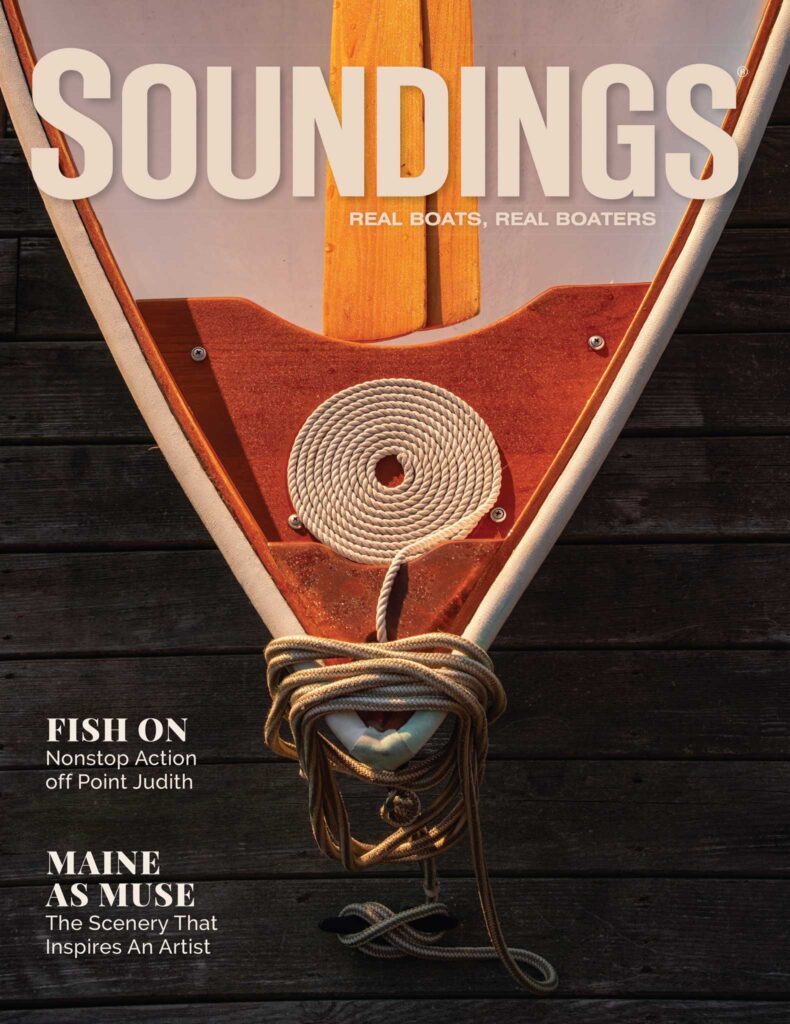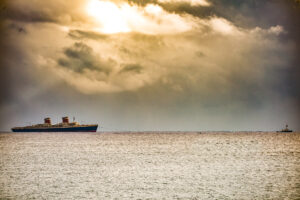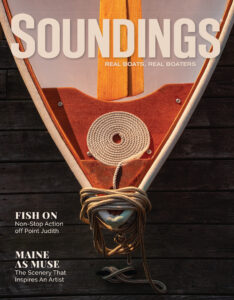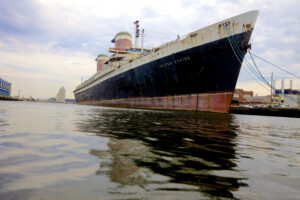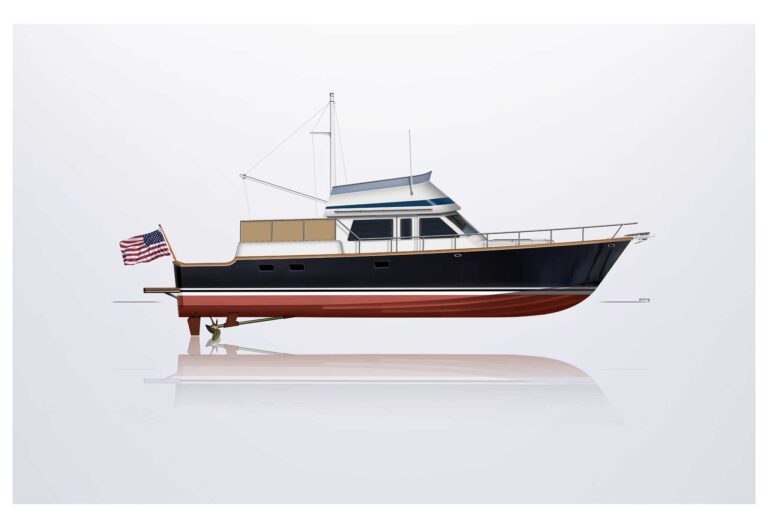Although it was uncharacteristic of me, I began my boating experience by attending an eight-week Coast Guard Auxiliary boating skills and safety class. It was uncharacteristic because I’m the type who only reads instructions as a last resort.
Although it was uncharacteristic of me, I began my boating experience by attending an eight-week Coast Guard Auxiliary boating skills and safety class. It was uncharacteristic because I’m the type who only reads instructions as a last resort.
I remember the gentleman who taught the session on seamanship, because he began by announcing that the best way to handle dangerous seas was to stay at the dock, a statement that elicited a good-natured groan from the class. Of course it was as true as it was well-worn, but in many instances seas can turn rough and weather can become inclement without advance notice. So in the absence of a discouraging weather forecast, we choose to venture out and rely on our seamanship skills and the seakeeping capabilities of our boats to get us home safely if conditions change.
Make no mistake: Rough seas in almost any boat are dangerous when capsizing and swamping are real possibilities. However, with judicious use of helm and throttle, combined with constant vigilance and good vessel preparation, rough seas can be safely transited.
Unfortunately, skills and boat capabilities vary widely. All of us begin as inexperienced skippers, and many boats are simply unsuitable for offshore use. So in a worst case, a new boater with a low-freeboard lake boat should heed that instructor’s advice and stay in friendlier waters. Owners of more capable boats and who have a bit of experience in varying conditions are more likely to be able to cope with rough seas, but getting home safely requires the skipper to recognize and properly deal with what’s around him, and that the boat be prepared to face the conditions.
It would be difficult to overemphasize the importance of the boat’s condition when coping with heavy weather. Navigating through rough seas puts unusual strain on mechanical, structural and even electrical systems, so if anything is going to fail it will probably do so then. Poorly maintained systems (fuel systems are notorious for this) or gear will be the first to let you down when you can least afford it. In today’s ethanol-driven world, fuel can deteriorate after several months in the tank. Always keep your fuel fresh and inspect and change as necessary all fuel filters and water separators.
It also is important to rig the boat properly when preparing to face rough weather. Hatches, ports and companionway doors should be closed to keep water out. Stow loose gear and tie down heavy objects like coolers or dive equipment to keep them from crashing around. Remove anything that might prevent water from draining out of the scuppers, and pump the bilge dry to get rid of the extra weight of any water there. Be vigilant for any change in the trim or “feel” of the boat that might indicate water is flooding the bilge or engine space. Distribute weight as evenly as possible, even if it means assigning positions to crewmembers or guests. Ensure that everyone, including you, has a properly fitted PFD on — not just handy, but on.
Make sure someone other than you knows how to access channel 16 on the VHF-FM. If another crewmember is capable, assign them the responsibility of keeping track of your boat’s position and heading by whatever means possible: compass, chart plotter, GPS, Loran, radar or depth sounder. Keep in mind that manual chart plotting in rough seas will be virtually impossible. “Seaman’s eye” may be all you have to navigate safely. Point out the location of flotation cushions or throwable PFDs. Once under way, check your position regularly and keep track of visible landmarks in case you need to pass that information along in an emergency.
Knowing that your boat is in good shape and properly rigged for foul weather will allow you to concentrate on the task at hand — dealing with the six potential conditions you could encounter in rough seas:
1. a head sea, where the waves are coming directly on your bow
2. a sea that is broad on the bow, coming at an angle between the bow and amidships
3. a beam sea coming at a right angle to the keel
4. a quartering sea, coming at an angle between amidships and astern
5. a following sea, coming directly on the transom
6. chop, a condition where a combination of wind, waves and current produces a confused sea that seems to batter the boat from all directions at once At the helm
Each of these conditions requires a different response at the helm, and all can present some degree of danger if not handled properly. Being ready to immediately adjust your course and speed is critical in rough-water operations. Keep one hand on the helm and the other on the throttle in order to quickly maneuver in sea conditions that could be constantly changing.
In some cases it may be necessary to go as slowly as possible and still retain steerage. Keep a sharp lookout for other vessels and remember that you may be invisible to each other at times when one of you is in a trough between waves.
Navigating into a head sea may not be the most comfortable course to steer due to the rapid pitching that occurs when you’re running smack into the waves. However, transiting into head seas does provide the greatest amount of directional stability, since the bow provides the least resistance to the waves and rudders are most effective. Also, the waves are directly in front of you in a head sea, where they are easiest to read and anticipate.
Most boat designs provide enough buoyancy at the bow to keep it from pitching into the next wave, but you may still have to reduce power on the downward slope to keep from burying it. Try to crest each wave at a slight angle to reduce the stresses on the hull and crew as you go over the top. Steering into a sea that is broad on the bow can be handled in much the same way, though you may want to approach the crest of each wave at more of a head-on angle to reduce rolling.
When your course requires traveling in a beam sea, there are two options open to you. If the waves are broadly spaced, you may be able to stay your course and ride up and down them without excess rolling. Otherwise, you can set a broad zigzag course, where you travel with the sea broad on the bow for some distance before turning 90 degrees and accepting a quartering sea for an equal distance. While neither leg may be particularly comfortable, such a strategy will reduce the danger that some beam seas can present.
Handling a quartering sea can be difficult and uncomfortable because it not only causes rolling and yawing but affects steering as well. Using a zigzag course may not be very inviting because you would end up alternating between a beam sea and a following sea during every cycle. The alternative is a combination of wrestling with the rudder to keep the boat under control and delivering enough power to the prop to maintain speed and keep the waves from pushing the stern sideways, which can lead to broaching or capsizing in the trough of a wave.
Following seas
There are many different elements that determine how a following sea will affect you and the amount of effort you will have to exert to avoid problems. The design and type of your boat is an important factor. A broad-beamed planing hull presents the largest surface area to the oncoming sea and will be most affected by it. (Trim tabs that are extended will add to the problem.) At the other end of the spectrum, a sailing vessel with a transom that is either abbreviated or out of the water completely will hardly be affected. Between the two extremes, larger boats or those with displacement hulls will only be moderately affected. The style of vessel that may be in the most danger in a following sea may be an outboard-powered boat with a low or cutaway transom. The combination of the aft weight of its propulsion and the absence of a barrier to oncoming water make it susceptible to pooping, where the water rushes in from astern and swamps the boat.
Beyond pooping, the dangers of a following sea are that it can propel the boat down the far side of a wave fast enough to bury its bow in the trough or that it may push the stern sideways on the way down, causing the boat to broach. Either event can happen very quickly, and avoiding the dangers can require great vigilance on the part of the helmsman. If there is any danger of capsizing, make sure everyone is on deck and wearing a PFD.
In large, steep seas usually found in open waters, you will find yourself increasing power as you labor up the backside of a wave or swell and having to throttle back to control excess speed on the way down the other side to avoid burying the bow. The tricky part is to avoid slowing to the point where you lose steerage and the sea can push the stern aside. If you sense that happening, immediately steer in the direction the stern is being pushed and apply as much power as necessary to quickly maneuver back to your original intended heading. In an extreme situation, such as navigating high waves that are rolling over the bar of an inlet, the best course is to work the throttle carefully so that you maintain a position just behind the crest and ride it in until you reach calmer water.
Ubiquitous chop
Larger boats usually are unaffected by chop, and most smaller craft can handle it easily to a point. However, when opposing wind, tide and current combine into a sea of confused 3- or 4-foot waves, piloting the smaller boat will require close attention. Unfortunately, there is no specific way to handle such a situation, but reduced speed is a must. The slow approach will allow you to steer into each peak or trough individually to keep the boat under control. The situation will make it difficult to maintain a course exactly, so keep an eye on your heading and position as you go.
Navigating in rough seas is a skill that must be learned through experience. Conditions vary greatly, and every boat responds with its own handling characteristics. But maintaining your boat in good shape, knowing how to rig it for the rough stuff, and having the basic knowledge of how to handle the helm will go a long way to ensuring your safety.

